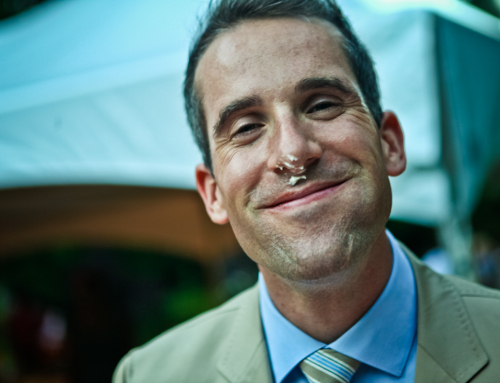The city of Phnom Penh sits on the convergence of two rivers, the Tonle Sap and the mighty Mekong. Ruthless history hangs thick like dust, over a city that has been decimated by one of the worst, yet least talked about dictatorships of the 20th century. Though the younger generations seem blissfully unaffected, those over the age of 35 are scarred by the horror, and must live with the haunting memories every day. The main streets of Phnom Penh may appear happy, brave and unaware, but dark secrets linger in back alleyways.
Phnom Penh has seen hell, and lives to tell the tale. One by one, it’s still picking up the painful pieces, and weaving them back into a tapestry of stability.
In 1975, the Khmer Rouge, a radical political group, took hold of Cambodia, and over the period of three years murdered over 2 million people by either torture or forced slave labour. Phnom Penh was evacuated completely, and sat vacant for three years.
Cambodia’s current government may not massacre its citizens in a spectacular fashion like the Khmer Rouge did, but it allows the poor to die on the streets from starvation, and claims to have no money for the welfare of it’s people.
Phnom Penh bustles with activity, as each person desperately makes a meager living any way they can. Young men plod up and down the pock-marked streets selling coconuts, while others offer ice cream or fried bananas. People sell artwork, used clothing or laundry services out of ramshackle storefronts. Some wade through the mounds of pungent garbage that line the streets looking for recyclables, or use lost limbs on the sympathetic eyes of tourists to collect a few dollars. There is no safety net for those who fail. Without money, there is no food. Many people only narrowly scrape by, and they do so by making huge sacrifices, like going weeks without seeing their families, or selling the only thing they’ve got: themselves.
Many of the tuk tuk drivers don’t live close enough to town to go home every night, but they cannot afford to stay in a guesthouse. Instead, they park somewhere quiet, and cram their bodies into the back seat. If they’re lucky, they will have arranged for a place to take a shower in the morning. Entire families live aboard haphazard fishing vessels no roomier than a large canoe. They only come ashore to sell their catch, and hope for enough money to feed young mouths.
Along the riverfront, small children beg or try to sell illegally printed books, though they should be in school. Young and persistent, they can often be hard to shake. The victims of landmines ply the tourist trodden streets looking for a handout, and young, homeless mothers watch over their children who are playing in garbage.
The colourful, abundant markets buzz with life and total chaos, choked with a plethora of people yelling, laughing and doing hurried business. Smiling faces emerge from piles of vegetables, clothing or other wares to offer us an inflated price. If you’re good at haggling you might find a bargain.
The smells that rise from the bowels of the makeshift markets are vile enough to make the contents of my stomach involuntarily enter my throat. At first it isn’t obvious what’s causing the stench. Then I pass stalls selling slabs of raw meat and fish sitting out in the warm sun, covered in flies. The smell caused by the man plucking feathers from a pile of hundreds of newly deceased chickens is too much to handle, and I retreat to the safety of the fruit stands.
Walking the streets of Phnom Penh is no boring task. The wide sidewalks are filled with garbage, food stalls, and vehicles using the space for parking, which forces pedestrians onto the street. We dodge cars, tuk tuks, motorcycles and bicycles. Many of these try to get our attention in hopes of gaining some business. At first it seems like complete chaos, but as the weeks pass by we realize there is a method to the madness on the roads of Cambodia.
At dusk, the sun hangs like a giant, hazy ball in the dust-filled sky, before it sinks unceremoniously towards the horizon. The streets are chock-full of rush hour traffic, snarling along at a sluggish pace. The smells of rotten fruit, sizzling food and gasoline fill the air.
After spending two weeks in a guesthouse, Tyson and I were glad to move into an apartment, located a fifteen minute walk from my new job. We found the place through a real estate agent who showed us a total of nine apartments. Ours is a large one-bedroom on the third floor, and we share a lovely rooftop patio with two other suites. Our bedroom is so big it’s almost shameful, and we enjoy luxurious 12ft ceilings.
Having a kitchen allows us to cook our own meals, although groceries hardly cost less than eating out, here. The average restaurant entree is priced at $4, which lures most people away from their stovetops at mealtime. A number of the apartments we looked at didn’t even have a kitchen, since it’s expected that expats will dine out.
The day after moving in, Tyson’s mother arrived for a two-week visit. Our place has a pull-out couch for visitors, and before she arrived we scrambled to find bedding and a few extra utensils.
Tyson and his mom visited the Royal Palace and National museum while I was at work. They were a bit disappointed by the presentation of both. On the weekend, we visited the Teul Sleng Genocide museum, and the killing fields. Teul Sleng, better know as S21, is a school that was transformed into a torture centre during the reign of the Khmer Rouge. Thousands of people were brought there to be interrogated, tortured and wrongly accused of crimes they confessed to during intense electrocution, or worse.
The four buildings of S21 have hardly been touched since they were discovered by the Vietnamese, in 1979. The place is eerie, the dank air heavy with horrible history. Rusted barbed-wire still hangs from the derelict railings and banisters. A number of rooms have been plastered with the photos of victims, their vacant stares full of fear, defeat, and despair. Other images are so graphic they’re almost impossible to look at.
Once the victims were admitted to S21, they were stripped of their clothing and belongings, and chained to poles. They were fed spoonfuls of watery rice three times a day, and allowed to defecate into a small box. They were singled out and taken into torture chambers where they endured extreme pain, and confessed to crimes they likely did not commit.
After about three months of terror, the emaciated, injured prisoners were loaded into trucks and shipped fifteen kilometres beyond the city limits. They were told they were being relocated, but many must have known that the end loomed near. At night, under harsh spotlights and to the sounds of a generator and loud music, these scared skeletons were blind-folded and bludgeoned to death one by one, and buried in mass graves.
Thirty five years later, the killing fields is a silent, peaceful place where birds sing and grass grows. But beneath the dirt, the horror still exists. While many of the graves have been discovered and exhumed, some remain. Each rainy season brings bones and clothing to the ground’s surface as the place slowly withdraws from its ugly past.
While Tyson’s mom visited, we were also given the opportunity to view a film about something equally as horrifying as the Khmer Rouge, but less talked about. The child sex slave industry is alive and thriving in Phnom Penh. Countrywide, it employs over 30,000 helpless children, many of whom have been sold by their own parents. The film opened my eyes to some of the sick habits western men have, and visit Cambodia to satiate.
Cambodia is rich with history, and while Tyson’s mother was here, we were able to visit a jewel that is equally as important as Teul Sleng, but from a completely different era. With it’s striking silhouette, Angkor Wat sits proudly, as a testament to human achievement and prosperity. The 700 year old structure is huge and built from stone. Like the pyramids and Inca ruins, it’s unclear how the people of the time were able to build such an architectural masterpiece. The temples of Angkor Wat are remarkable for their size and age.
We spent two days touring the many stone temples that surround Angkor Wat. On our first morning we arrived before sunrise, and in near blackness, made our way to the main temple. Disoriented and with few expectations, we watched an orange smudge slowly appear in the sky, revealing Angkor Wat. It was a truly magical experience.
Tyson and I have been in Phnom Penh for a month, and we’ve just had our visas extended. We’re settling into the day to day hum of life here, and enjoying the new experiences that come our way. We’ve indulged in massages by blind people, and even tasted pan-fried tarantulas!
We find things like chicken, tomatoes and cable tv very cheap. Zucchini, potatoes, electricity and internet services are quite pricy! Living off of my meager salary is nearly impossible for us, since we want to experience Phnom Penh for everything it has to offer.
Phnom Penh is raw, anguished, delightful and beautiful. It’s a city that does not rest, and hold’s it’s secrets close. The people are gentle, kind and carry genuine smiles. Most of all, it’s our home for the next little while, and we’re having the time of our lives!




































Though extreme poverty and poor law enforcement are primarily to blame for child sex trafficking in Cambodia, I think the Cambodian people’s casual attitudes toward sexual predation also contribute to the problem. Cambodians generally look up to foreigners, especially Westerners, as wealthy and benevolent. It’s unfortunate that some foreigners are in the country to take advantage of children.
Hi Carolyn and Tyson
Your words described the sites you see in Cambodia so beautifully and they bring back the memories of the time when Lauren and I were in Phnom Penh and Angkor Wat. It is hard to believe until you see it all for yourself.
Carol Talley
I had a hard time reading this posting, Caroline, but thank you for your compelling account. Cambodia endured some of the greatest evil of the 20th century and the Western World doesn’t know enough about it. I’m thrilled that you’ve found your niche in this vibrant city, but you are very much missed at home. Stay safe. Love across the miles – Mom
I see that you have seen the wonders and the mysteries of this very beautiful part of the world that is inhabited by a friendly industrious and hospitable people. You have also seen the skeletons in their closet that were happening just as I left High School. When the US pulled out of South East Asia it allowed the madmen like Pol Pot to take over. It was massive as they victimized those that lived in the cities, the educated, the religious and the artists. It was the Atheist and Communist state at the height of its influence.
Hi Caroline – WOW! hard to believe – truly a wondeful expierence which you folks will never forget.
Sta Safe – Luvs Syl & Kay
Wow. Very moving. A bit of beauty and a lot of anguish.
Made me cry. You are a brave lady, Wasp Killer Hero.
Lots of love to you!
Chels
Caroline, your post brought both tears and smiles. Thank you
Be safe. Love Dad